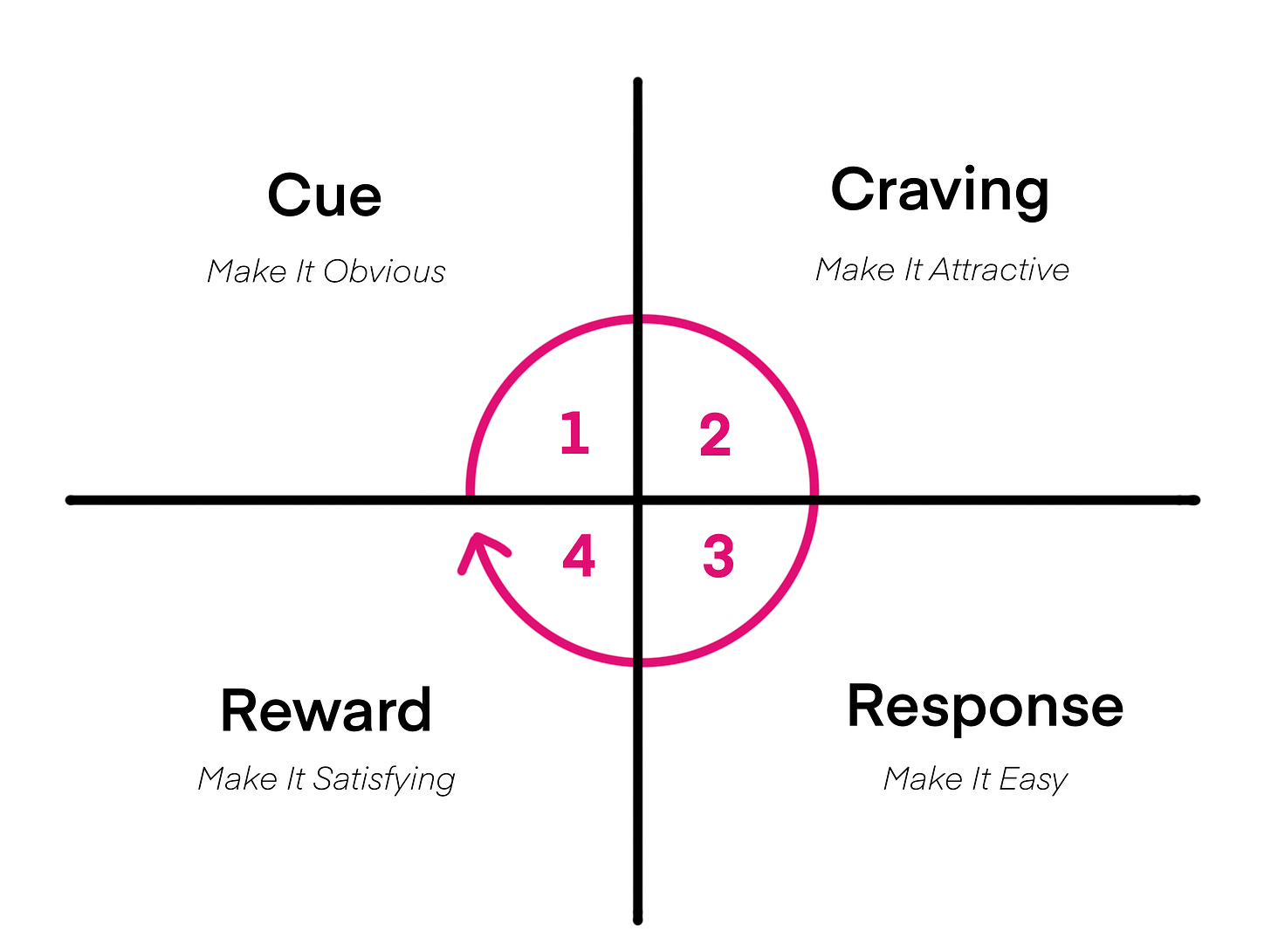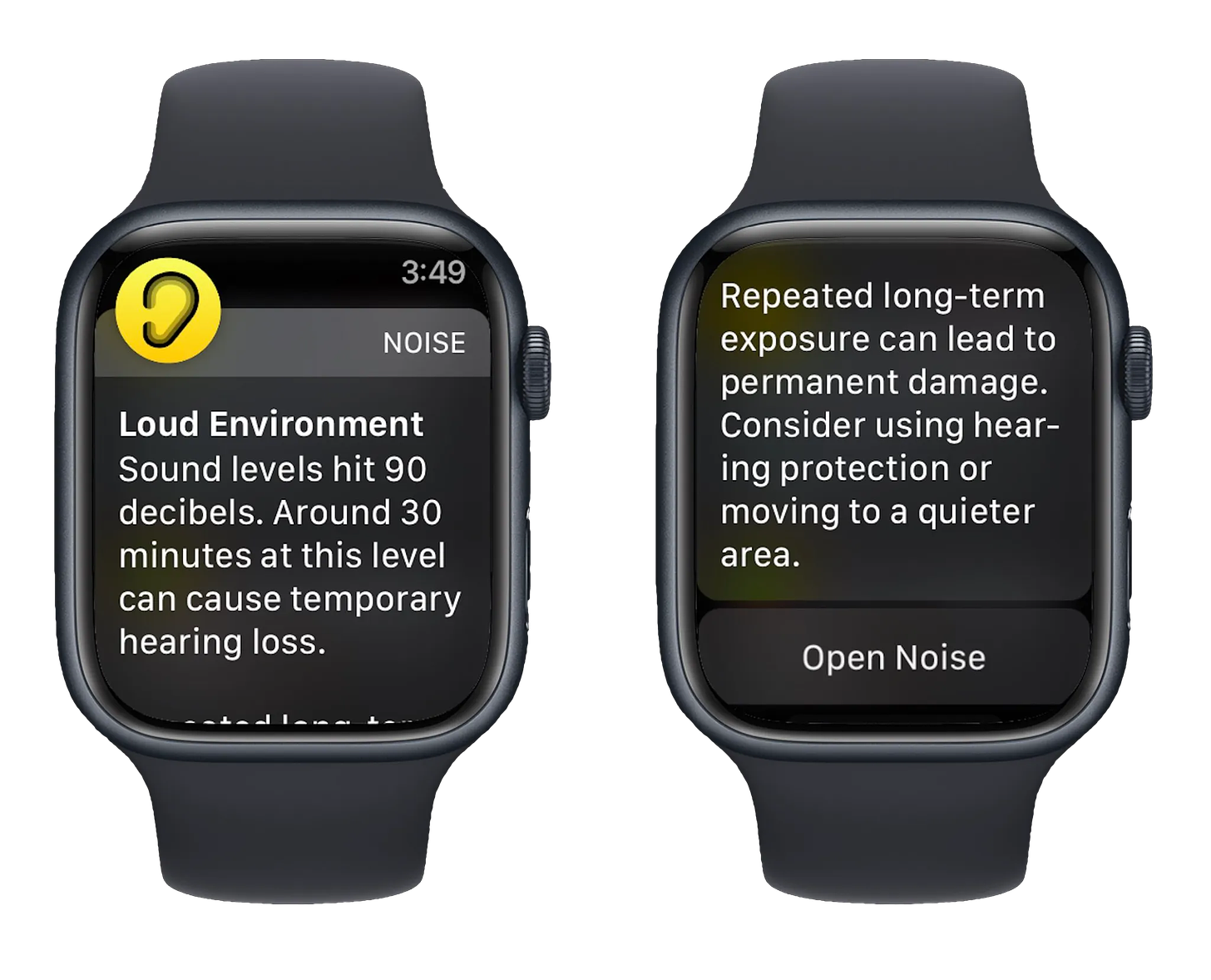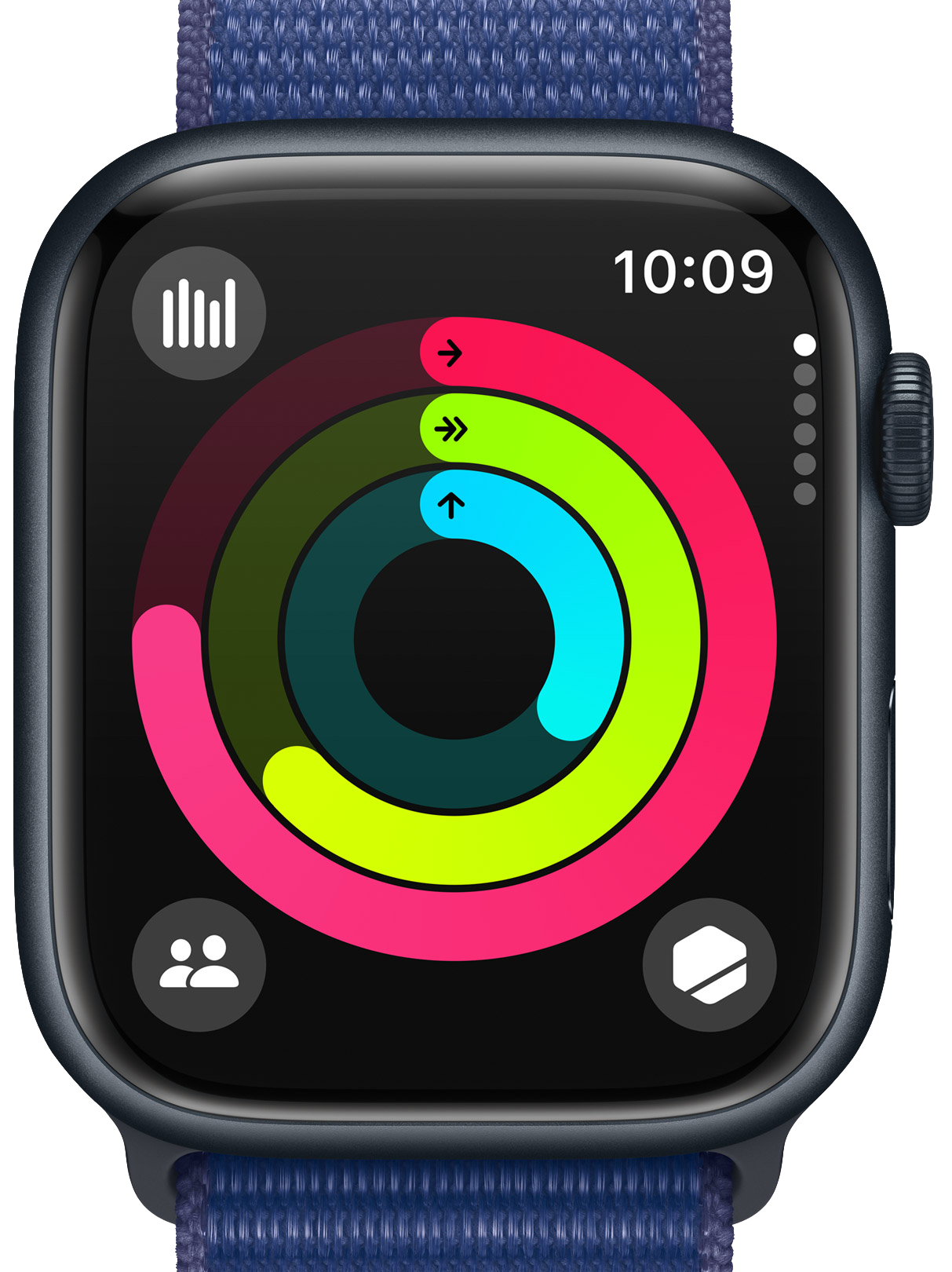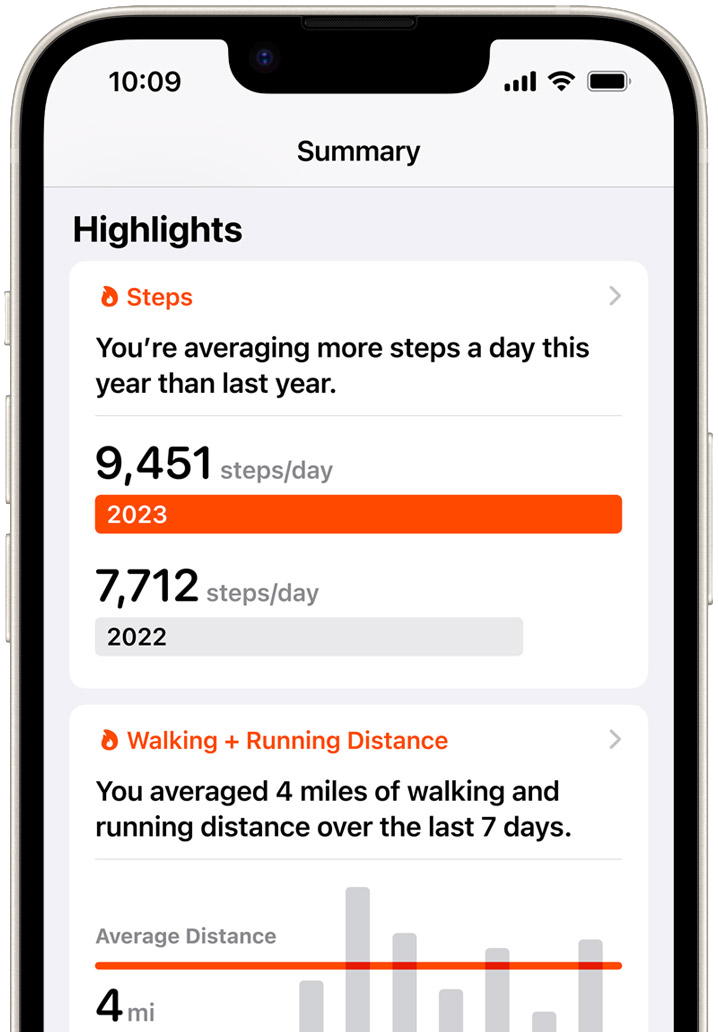How the Apple Watch Shapes Healthier Habits
Leveraging Behavioral Design for Wellness, Engagement, and User Empowerment
In a world where technology often contributes to sedentary lifestyles, it can also be a force multiplier for good in promoting health and wellness through well-intentioned design with a focus on the use.
Sections Covered:
Seamless Habit Tracking: From Data to Action
Subtle Nudges, Major Shifts: Designing Choices for Better Health
Turning Goals into Games: The Engagement of Gamification
Narratives in Numbers: Personalizing Data-Driven Health
1. Seamless Habit Tracking: From Data to Action
By seamlessly integrating data tracking into daily life, the Apple Watch empowers individuals to take control of their health. With its array of sensors, the Apple Watch not only offers unprecedented access to real-time information about daily activities but also empowers users to foster and reinforce healthy habits.
This technology offers a practical approach to monitoring health by providing tangible, quantifiable metrics such as step counts, heart rate trends, and sleep quality. This significant insight revolutionizes the way individuals understand and manage their well-being, illustrating the direct impact of lifestyle choices on their health.

The Apple Watch excels in transforming habit formation from an abstract challenge into a tangible process of accumulating small, celebrated victories. It directly applies James Clear's Four Laws of Behavior Change from Atomic Habits (2018) — making it obvious, attractive, easy, and satisfying — to the realm of personal health.
By providing instant feedback on achievements, such as closing activity rings or surpassing daily step goals, the Apple Watch not only makes the desired behavior obvious and attractive but also simplifies the adoption of healthier routines. This immediate gratification for small wins makes the journey towards better health feel less daunting and more rewarding.
Each notification or badge of progress serves as a cue, sparking the craving to continue performing the healthy behavior (response) and culminating in the reward of seeing real-time progress and achieving personal goals.
This seamless integration of cues, cravings, responses, and rewards enhances the user experience, ensuring that forming healthier habits is not only intuitive but also inherently satisfying. This strategic alignment with Clear’s principles effectively turns the pursuit of health into a habit-forming experience, deeply woven into the fabric of daily life.
Furthermore, the certainty provided by the Apple Watch's precise tracking capabilities eliminates the unreliability of our memories, allowing for small, incremental goals to be set and achieved with confidence.
For instance, aiming to increase steps by a modest 5% weekly becomes a manageable and measurable goal rather than overwhelming, preventing the common pitfall of starting too aggressively and giving up prematurely.
This approach to goal setting and achievement underpins the watch's ability to make health goals engaging and rewarding, creating a sticky product experience that users are eager to continue.
Empirical research, such as the study by Lee and Lee (2020), underscores the significant psychological impact of wearable technology. Their findings highlight how the combination of internal motivations, such as the aspiration for improved health, and the external reinforcement provided by user-friendly technology, drives continuous user engagement with health and fitness routines.
2. Subtle Nudges, Major Shifts: Designing Choices for Better Health
The Apple Watch expertly promotes healthier lifestyles by implementing strategic nudges and choice architecture, a methodology advocated by Richard H. Thaler and Cass R. Sunstein in Nudge (2008).
It cleverly establishes health-enhancing behaviors, such as reminders to stand or take a moment to reflect, as defaults. These not only serve as subtle prompts for positive action but also exemplify effective choice architecture by making healthier options, like standing and moving after periods of inactivity, the most straightforward and appealing choices.
By discreetly encouraging users to move at least once an hour, the Apple Watch goes beyond mere reminders; it gently guides users towards healthier habits through seamless integration into daily routines.
This strategy underscores the power of nudges to transform modest activities into significant, cumulative enhancements of both physical and mental well-being, demonstrating the profound impact of behavioral science in guiding users towards beneficial decisions.

Building upon these concepts, the Apple Watch embodies Don Norman's Forcing Functions idea (2013), whereby design subtly mandates interactions that enhance well-being, weaving such actions seamlessly into the rhythm of everyday life without compromising personal autonomy.
This equilibrium between guided behavior and individual choice empowers users, granting them control over their health decisions in a manner that feels both freeing and supportive. An exemplary implementation of this is the watch's noise app, which passively monitors environmental sound levels and alerts users when noise approaches potentially damaging decibels.
This feature exemplifies a non-intrusive alert system, engaging users only when necessary, thereby informing them of auditory risks while leaving room for personal agency in how they choose to act—be it by heeding the warning or mitigating the noise source.
Nir Eyal's Hooked (2014) provides a framework for understanding the Apple Watch's seamless integration into daily routines, aiding in the development of new habits. Leveraging intrinsic motivation, the watch offers timely, personalized notifications, spanning from health-related reminders to social connectivity cues, promoting consistent user engagement.
This integration transforms the device from an accessory to an essential companion for modern living. For instance, the ease of accessing weather, temperature, or calendar updates directly from the wrist minimizes the need to check smartphones, which are often sources of extended distraction.
This functionality highlights the Apple Watch's effectiveness in preemptively managing potential distractions, enabling users to stay focused on their immediate tasks and overall well-being.
3. Turning Goals into Games: The Engagement of Gamification
The Apple Watch employs gamification strategies similar to those in game design, engaging users and motivating them towards health goals. Jane McGonigal's Reality is Broken (2011) underscores the power of these strategies in real-world contexts, including her SuperBetter game, which uses gamification for recovery and wellness.
SuperBetter's foundation is built on creating a gameful mindset to tackle personal health challenges. This is analogous to the Apple Watch's goal-setting process within the Activity App, where users personalize health and fitness objectives across three parameters: Move, Exercise, and Stand goals.
Just as SuperBetter encourages participants to define and pursue recovery-related goals in the real world with the support of friends and allies, the Apple Watch enables individuals to set and achieve personalized health milestones. The sense of autonomy and empowerment derived from tailoring one’s recovery or wellness journey is crucial in both contexts.
McGonigal highlights the pivotal roles of social support and visible progress in SuperBetter, elements that align closely with the Apple Watch’s functionality. The device’s celebration of milestones—be it setting new personal records or completing daily activity rings through haptic feedback—provides users with tangible reward mechanisms.
Beyond individual accolades, it fosters a sense of community by enabling users to share their achievements, engage in friendly competition, and jointly celebrate successes through its integrated sharing capabilities.
This emphasis on communal engagement enhances the gamification experience, underscoring the significance of collective support and progress in boosting engagement and facilitating ongoing personal development.
4. Narratives in Numbers: Personalizing Data-Driven Health
Apple redefines health tracking with the Apple Watch by transforming data into engaging narratives of personal health journeys. Abstract numbers become milestones of achievement, illustrated through vivid colors and dynamic designs that bring one's wellness narrative to life.
This approach not only renders complex health data accessible but also personal and meaningful, enhancing users' sense of control and ownership over their health choices. In line with Apple's Human Interface Guidelines (2022), the watch's design philosophy centers on simplicity and engagement, making sophisticated health metrics intuitive and straightforward for users.
The Goal-Gradient Effect, a concept rooted in behavioral psychology, illustrates how individuals' motivation to reach a goal increases as they get closer to achieving it. Highlighted the research by Kivetz, Urminsky, and Zheng (2006), this phenomenon suggests that the perception of progress towards a target plays a crucial role in energizing and directing behavior. As users progress closer to their goal, their effort and engagement tend to accelerate, driven by the increasing anticipation of the reward.

In the context of the Apple Watch's Activity Rings, this effect is cleverly harnessed to enhance user motivation. Each ring represents a specific health goal (e.g., standing, moving, exercising), and as the user makes progress, the visual representation of the rings closing serves as a constant reminder of how close they are to achieving their daily objectives. This visual cue not only satisfies the user's need for immediate feedback but also taps into their intrinsic motivation by making the abstract concept of health progress tangible and immediate.

Apple's approach to data storytelling personalizes health tracking by comparing current achievements with past performance, highlighting progress like 'You're walking more steps than you did last week’ in the connected Health App on iPhone. This technique nurtures the innate desire for self-improvement and sidesteps the pitfalls of social comparison, fostering a narrative of self-competition that's both healthy and inspiring. By doing so, it not only informs users but immerses them in a personal journey of growth and accomplishment, free from external pressures.
This narrative extends beyond the individual, leveraging shared experiences to cultivate a broader societal engagement with health. In harmonizing personal achievement with communal well-being, the Apple Watch demonstrates the powerful role of technology in promoting a collective pursuit of health, underscoring the significance of our shared wellness journey.
Thanks for reading!—Found value in this? Three ways to help:
Like, Comment, and Share—Help increase the reach of these ideas
Subscribe for free—Join our community of makers
Become a paid subscriber—Support this creative journey
Keep Iterating,
—Rohan
→ Connect with me on LinkedIn, Bluesky, Threads, or X.
Sources:
Apple Inc. (2022). Charting data - Human Interface Guidelines. Retrieved March 6, 2024. [Link to Source]
Clear, J. (2018). Atomic Habits: An Easy & Proven Way to Build Good Habits & Break Bad Ones. Avery.
Eyal, N. (2014). Hooked: How to Build Habit-Forming Products. Penguin Books.
Norman, D. A. (2013). The Design of Everyday Things: Revised and Expanded Edition. Basic Books.
Kivetz, R., Urminsky, O., & Zheng, Y. (2006). The Goal-Gradient Hypothesis Resurrected: Purchase Acceleration, Illusionary Goal Progress, and Customer Retention. Journal of Marketing Research, XLIII (February), 39–58. [Link to Source]
Lee, S. M. and Lee, D., (2020). Healthcare wearable devices: an analysis of key factors for continuous use intention. Service Business, 14(4), pp.503–531. [Link to Source]
McGonigal, Jane. (2011) Reality is Broken: Why Games Make Us Better and How They Can Change the World (p. 20). Random House.
Thaler, R. H., & Sunstein, C. R. (2008). Nudge: Improving Decisions about Health, Wealth, and Happiness. Penguin Books.




